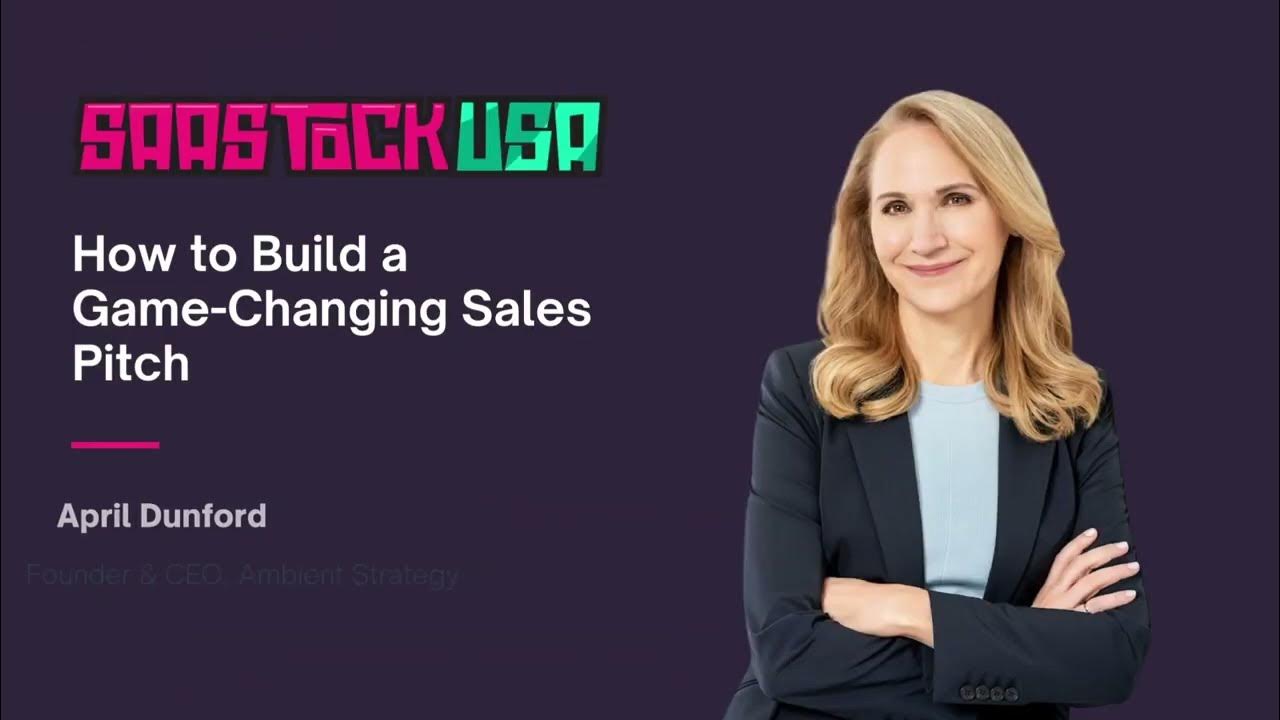Full 18-Minute Cold Calling Course (For SaaS Sales)
Summary
TLDRThis training course on cold calling reveals key strategies that top-performing sales reps use to achieve success rates of over 30%, compared to the industry average of just 1.48%. The course covers essential techniques such as managing call reluctance, making impactful first impressions, using permission-based openers, and crafting compelling questions. It emphasizes the importance of listening, building rapport, and focusing on the prospect's needs rather than pitching a solution. Additionally, the course highlights how to effectively close calls, secure meetings, and ensure follow-through, empowering sales professionals to drastically improve their cold calling performance.
Takeaways
- 😀 Cold calling success rates are generally low, with an average of 1.48% success, meaning a 98% failure rate.
- 😀 Top performers in cold calling achieve a 30% or higher success rate by using a different approach than average reps.
- 😀 Top performers experience call reluctance too, but they overcome it by pushing through and making the call anyway.
- 😀 High-performing reps talk more than the prospect during the call, with a ratio of about 55% for the rep and 45% for the prospect.
- 😀 Successful cold callers avoid pitching solutions right away and instead let prospects ask about their company and solutions.
- 😀 Discovery isn't reserved for later stages of the sales process – it's crucial even in the early cold call.
- 😀 Top performers are often the first to end the call, cutting it short instead of letting the prospect end it.
- 😀 Call reluctance can be managed using a four-step framework: Identify the pattern, pinpoint the trigger, derail and replace, and practice until it becomes habit.
- 😀 A permission-based intro is crucial for cold calls; this helps get the prospect's agreement to continue the conversation.
- 😀 Relevance is key in the first 30-60 seconds of the call – ensure the prospect knows why you're calling them specifically.
- 😀 The closing phase should aim to secure the meeting quickly and efficiently, ideally scheduling it immediately after the call.
- 😀 The 'triple confirmation' technique is important for ensuring the prospect remembers and confirms the meeting, agenda, and next steps.
Q & A
What is the average success rate for cold calls according to Gong?
-According to Gong, the average success rate for cold calls is 1.48%, meaning there's a 98% chance of failure when making a cold call.
How do top-performing sales representatives differ from average performers on cold calls?
-Top-performing sales representatives often achieve success rates of 30% or higher. They engage more in the conversation, handle call reluctance effectively, avoid pitching their solution immediately, and focus on asking questions rather than speaking about their company.
What is 'call reluctance' and how do top performers deal with it?
-Call reluctance is the fear or hesitation to make cold calls. Top performers experience it too, but they push through it by focusing on the prospect's needs, changing their mindset, and practicing specific techniques to overcome their fear.
What is the 'top performer gap' in cold calling?
-The top performer gap is the difference in success rates and techniques between average cold callers and top performers. Top performers consistently achieve significantly higher success rates due to their approach and mindset.
How can sales representatives manage their call reluctance effectively?
-Sales representatives can manage call reluctance by identifying the trigger points, replacing negative thoughts with more productive ones, changing their physical state (e.g., standing up), and setting smaller, achievable goals like starting a conversation instead of booking a meeting.
What is the 'permission-based intro' in a cold call?
-A permission-based intro is when the salesperson asks for the prospect's permission to continue the conversation. This approach makes the call feel more respectful and less intrusive, e.g., 'Hey, David, do you have a minute for me to explain the reason for my call?'
Why is it important to use relevance in a cold call?
-Relevance is crucial because it shows the prospect that the salesperson has done their homework and is calling with a purpose that directly relates to the prospect’s role or company, which increases the likelihood of engagement.
What does 'customer voice' mean in cold calling?
-Customer voice refers to using examples or perspectives from other customers or industry peers to discuss common challenges. This helps the prospect feel that their issues are shared and understood, making them more likely to engage.
How should a salesperson close a cold call effectively?
-To close a cold call effectively, the salesperson should summarize the conversation, propose a meeting, and confirm the details multiple times to ensure the prospect is committed to the meeting. The goal is to secure the meeting while respecting the prospect’s time.
What is the importance of confirming the meeting during a cold call?
-Confirming the meeting is important because it ensures the prospect is committed to the meeting and reduces the chances of cancellations. Triple confirmation is a strategy where the salesperson confirms the meeting time, agenda, and confirmation process to solidify the commitment.
Outlines

此内容仅限付费用户访问。 请升级后访问。
立即升级Mindmap

此内容仅限付费用户访问。 请升级后访问。
立即升级Keywords

此内容仅限付费用户访问。 请升级后访问。
立即升级Highlights

此内容仅限付费用户访问。 请升级后访问。
立即升级Transcripts

此内容仅限付费用户访问。 请升级后访问。
立即升级浏览更多相关视频

Cold Calling Pickup Rates - How to Increase your conversions!

After cold calling for 20 years, I found the best opening line

Cold Calling AI Agency Script That Gets 7 Meetings/day

How to Build a Game-Changing Sales Pitch with April Dunford, Ambient Strategy at SaaStock USA 2024

5 Tips to Become the BEST Salesperson - Grant Cardone

What it takes to make 100 cold calls per day
5.0 / 5 (0 votes)
